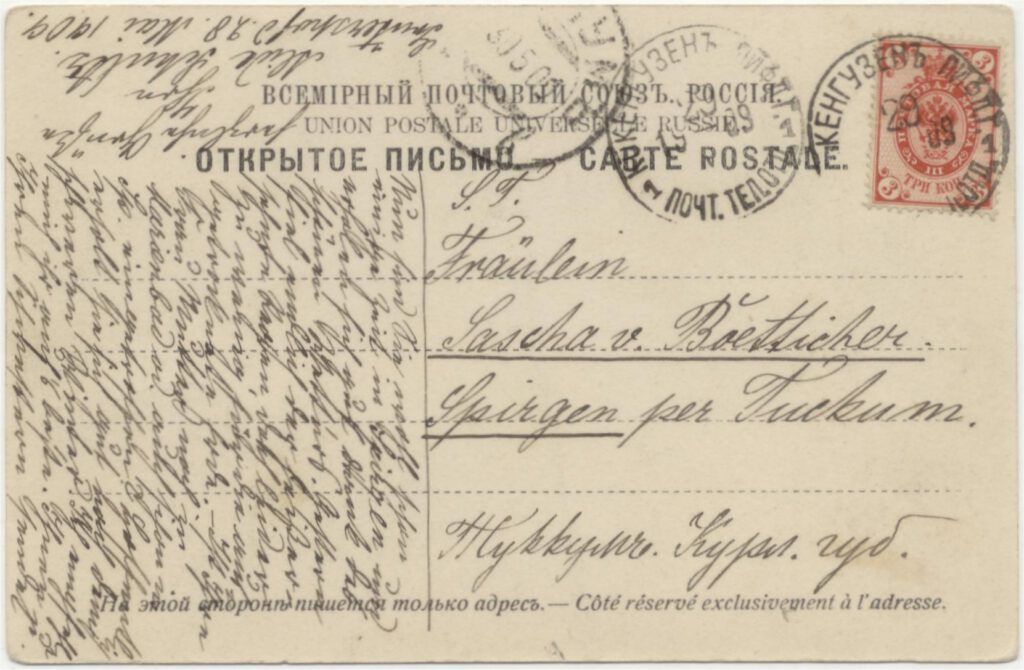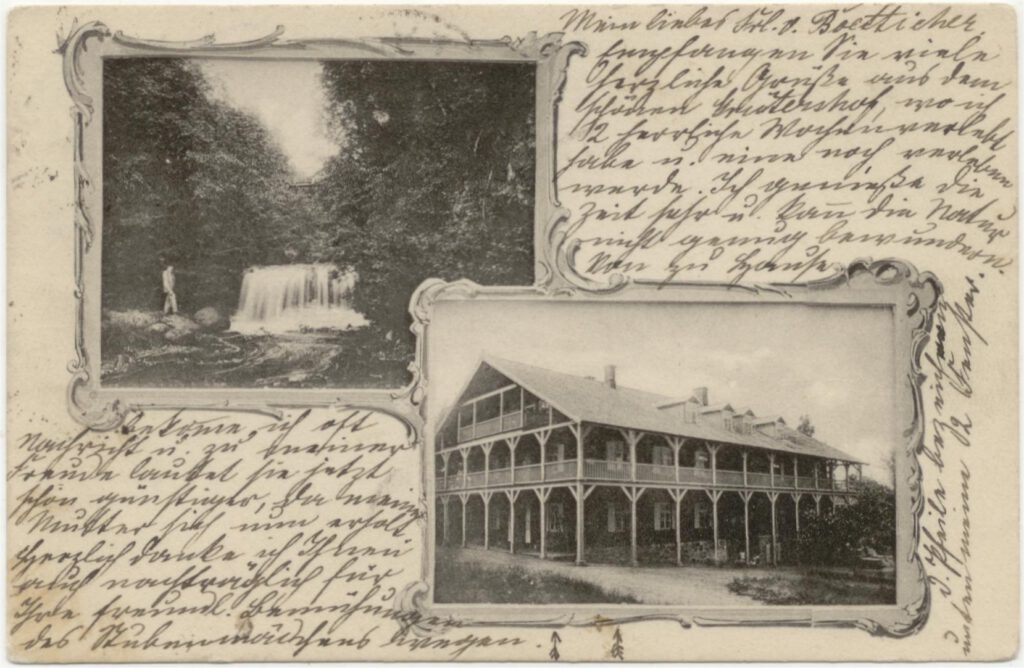In the tsaristic one-ring postmark on this card you see КОКЕНГУЗЕНЪ (KOKENGUZEN), more a transcription of the German name Kokenhusen. In Polish the place was called Kokenhuza. Koknese is the present Latvian name.

In the postmark also the indication ЛИФЛ. (LIFL.), Livland, Livonia and Г [G.], short for ГУБЕРНIЯ (GUBERNIYA), Government. The southern part of contemporary Estonia was in tsarist times the northern part of the government Livonia, the northern part of contemporary Latvia was in tsarist times the southern part of Livonia.
It is a ‘cross-date’-postmark: in the EESTI-classification type 6C (with gubernia) and 6D (without gubernia), are the ‘crossed-date’-types. So here type 6C.
Here we see the indication ПОЧТ. ТЕЛ. ОТД, the abbrevation for ПОЧТОВО-ТЕЛЕГРАФНОЕ ОТДЬЛЕНIЕ (POCHTOVO-TELEGRAFNOE OTDELENIE = Post-Telegraph Sub- Office), so according the EESTI-classification this is type 6C2.
In Baedeker (1914) a visit to Kokenhusen (Koknese) is recommended:
“A pleasant trip down the Dvina may be made from Stockmannshof to (25 V) Kokenhusen. (6-8 hrs., including stops; boat with two rowers 5-6 rb.). On the Courland bank (left) rises the moss-clad rock of Stabburags (‘Rock of Tears’. The following stretch, as far as Grütershof, is accompanied by picturesque limestone cliffs. On the left is the ruined castle of Altona (p. 48). We land at the ruin of Kokenhusen.”
From: Russia with Teheran, Port Arthur, and Peking : handbook for travellers / by Karl Baedeker. – First English edition published 1914, – This edition reprinted in 1971 and jointly published by David & Charles Newton Abbot and George Allen & Unwin London. – p. 47.
This Baedeker – the English edition of 1914 is also complete on internet::
archive.org/details/russiawithtehera00baed: Russia with Teheran, Port Arthur, and Peking : handbook for travellers (1914). – Translation of 7th German ed. (Leipzig : K. Baedeker, 1912). – With 40 maps and 78 plans. – Maps by: Wagner & Debes’ Geogr. Estab., Leipzig. – Railway map of Russia on back endpaper. – Includes index. – Bibliography: p. lxii-lxiv.
